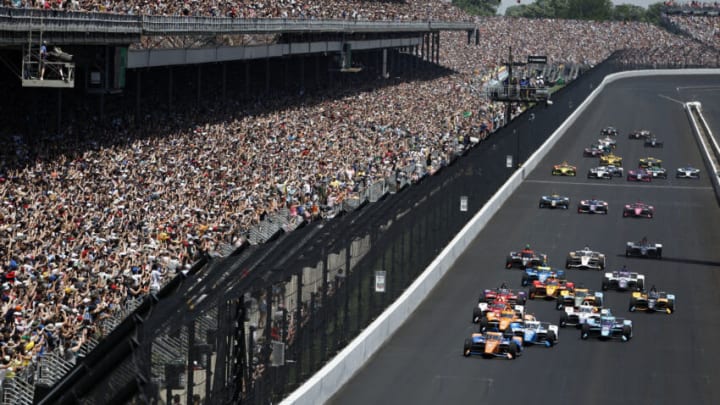Local live viewership of the Indy 500 is once again blacked out, and that includes a loophole that was discovered ahead of last year’s race.
Continuing an archaic tradition that started nearly three-quarters of a century ago, local Indianapolis residents will not be able to watch the 107th running of the Indy 500 live on NBC this Sunday, May 28 at 11:00 a.m. ET.
This marks the first complete blackout of the event since 2019, though it ironically serves as an illustration that Indianapolis Motor Speedway is not planning any immediate changes to this approach moving forward.
In 2020, the blackout was lifted because the race looked more along the lines of a glorified practice session. In other words, no fans were allowed to attend because of COVID-19-related restrictions. In 2021, attendance was limited due to the same restrictions, so it was again lifted.
Then last year, the blackout was reinstated, but fans found a loophole allowing them to watch the race with a premium subscription to NBC’s Peacock streaming service, since nothing had been in place to prevent streaming where the broadcast was banned.
Now that loophole has been sewn up, and fans in central Indiana will need to attend the Indy 500 in order to watch it live.
It has reignited the age-old debate. Should the Indy 500 still be blacked out for local residents?
The whole goal of the blackout is to get local residents to attend the race. It’s not a foreign concept. Other sports utilized similar blackouts for their local markets in a strategic attempt to sell tickets.
Decades ago, that is.
When it comes to tradition, nobody values it more than Indianapolis Motor Speedway race fans. And there’s certainly nothing wrong with that, given the magnitude of the event and all of the pageantry surrounding it each and every year.
But at some point, you can’t totally live in the past. Believe it or not, every single Indy 500 brings with it some form of change. Whether it’s the cars, the drivers, the aero package, the qualifying shootout format, the bumping format, or something else, change is inevitable.
The blackout should be no exception.
We’re already talking about the most attended single-day sporting event in the world. We’re talking about an event that turns the confines of the Racing Capital of the World into a city that would rank top 60 in the United States in terms of population, higher than cities such as Orlando, Cincinnati, Newark, St. Paul, and Pittsburgh.
Does anybody really think that lifting the blackout is going to reduce attendance numbers?
If anything, the blackout is counterproductive. It limits who can view the race and thus reduces the potential to draw in new fans. For a fanbase that is a bit older than those of other sports to begin with, that’s the opposite of good business.
We live in an era where everybody is connected. More and more people are owning more than one screen for live sports. People talk. Social media exists. People want action. It takes a certain amount of effort to not be up to date on live sporting events. Any more than a few seconds of a delay is considered “late”.
So is making people sit through a three-hour event that already happened the best approach?
Maybe several decades ago. Nowadays, many fans are already going to know the outcome. Highlight clips exist minutes after something happens.
Then you have to ask yourself, why even watch? It’s not nearly as captivating at that point as watching a live event unfold.
As for fans in the central Indiana area, who are literally prime candidates to become Indy 500 regulars with proper race exposure, a tape delay is the worst possible concept. By what logic does blocking fans from viewing an event generate more interest in that event moving forward?
And in terms of the competition with other sports, there will always be something else (actually being shown live) that people can watch instead.
Guess what? They will.
It’s crazy how far behind the times IndyCar is when it comes to this rule. It’s even crazier that they appear intent on remaining there, having only truly lifted the blackout when the Indy 500’s 100th running was sold out in 2016.
